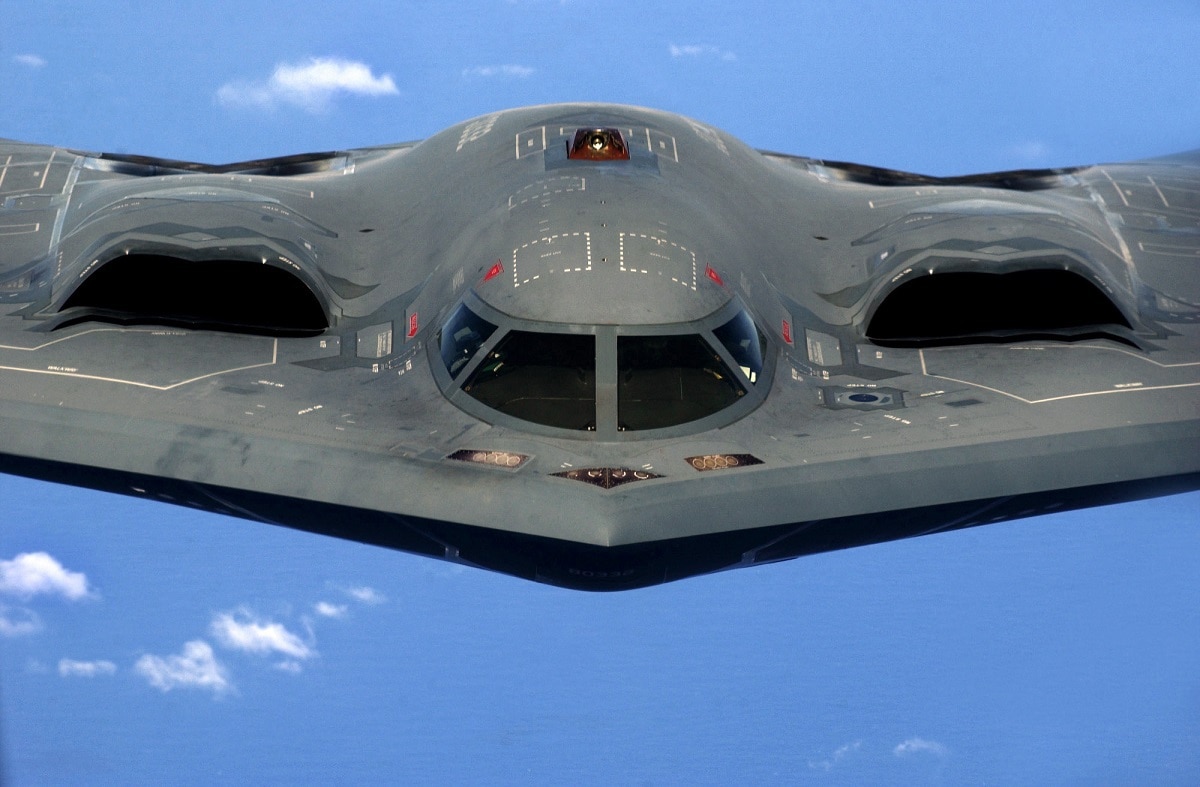As any Las Vegas gambler knows, 21 is the magic number in blackjack. However, in the case of the prospective B-21 Raider bomber, the “B” does not actually stand for “Blackjack,” the proximity of Nellis AFB to Vegas notwithstanding. And yes, it’s a mere coincidence that the would-be warbird’s moniker has commonality with the Las Vegas Raiders NFL franchise. For the record, the plane was named for the immortalized Doolittle Raiders of WWII. That said, the U.S. Air Force is apparently willing to take a gamble (c’mon, you shoulda seen that bad pun coming from a mile away, even with stealth invisibility) on the B-21 Raider as being the next big thing in stealth bomber technology, quite possibly the direct successor to the original stealth bomber, the B-2 Spirit. At least if the artist’s rendering is an accurate indicator. Let’s delve further into the known details and feasibility of this project.
Born From the Ashes of the F-22?
Several years after then-SECDEF Robert Gates’s infamous decision to kill the F-22 Raptor, retired Air Force Chief of Staff General Norton Schwartz floated an allegation within the pages of his memoir that Gates had done so in order to make room in the USAF budget for the resurrection of the previously stillborn Next-Generation Bomber (NGB) program. In a 2018 review of Gen. Schwartz’s book, Air Force Magazine Editorial Director John A. Tirpak elaborated:
“Nevertheless, Schwartz and Donley believed there was a ‘valid need’ for a new bomber; an “unquestioned requirement” to provide such an option for a future president, ‘both for warfighting and deterrence purposes.’ Schwartz and Donley had to convince Gates the Air Force “would not repeat the experience of the B-2.” They argued that USAF had to have 80-100 new bombers, and the service would swear to keep the cost as the prime consideration and not break a ceiling of $550 million in 2010 dollars. Moreover, they promised the aircraft would rely heavily on offboard sensors, jammers, and other capabilities to keep the cost down, as part of a system of systems…’We had to convince him of all of this, or like the [NGB], the long-range strike bomber would be dead in the water,’ Schwartz asserted. Ultimately, Gates relented, apparently persuaded that ‘we as an Air Force could field such a system with discipline.’ Schwartz said he and Donley are proud of having ‘succeeded in persuading Gates’ the B-21 would be pursued with ‘discipline like he had not seen, and so it’s up to our successors to deliver on that promise. The Air Force has to, if it is going to bring this one home.‘”
Raiding the Congressional Purse Strings?
So, fast forward to the present year, and whilst the B-21 has survived Bob Gates’s budget ax, it’s not yet wholly smooth sailing (yes, I’m using naval slang for an Air Force project, so sue me) for the B-21 program for the Raider. As noted in a Popular Mechanics article penned by Kyle Mizokami two months ago:
“The B-21, the Air Force’s first new heavy strategic bomber in more than three decades, was originally forecast to fly in late 2021, then the date slipped into 2022, and now 2023. Despite the delay, the aircraft is reasonably on track and has stayed within its budget—a modern miracle for expensive defense programs.”
So far so good. But, given the much-publicized teething issues of the F-35 Lightning II, some eyebrows are almost certainly still going to be raised about the Raider potentially becoming another seemingly interminable money pit. These concerns would be amplified by the fact that the B-21 is competing for DOD and Congressional dollars with another ambitious USAF 6th-Generation warbird project, the Next-Generation Air Dominance (NGAD) program.
Air Force Secretary Frank Kendall remains optimistic. During his State of the Forces address last September, Mr. Kendall announced, “As I speak, there are now five test aircraft being manufactured on the B-21 production line at Air Force Plant 42 in Palmdale, California. This investment in meaningful military capabilities that project power and hold targets at risk anywhere in the world addresses my No. 1 priority,”
If the program continues to proceed as planned, the B-21 will indeed be an impressive bomber. It will have sufficient range to reach Red China itself if necessary, with the capability to strike adversaries with conventional long-range cruise missiles, the B61-12 nuclear gravity bomb, and the AGM-86B nuclear cruise missile alike.
The most hopeful sign yet for the viability of the B-21 program — at least for the short-term — was the July 14, 2022, passage by the U.S. House of Representatives of the FY23 National Defense Authorization Act (NDAA). The passage, among other things, recommends full funding for the B-21 Raider program. As Congressman Rob Wittman (R-Virginia, 1st District), stated in an official press release, “Chairman Courtney’s mark also continues essential future development funding for the Columbia ballistic missile submarine and the B-21 bomber—both essential components to our nation’s nuclear deterrence.”
Stay tuned, dear readers. We at 19FortyFive will keep you posted on the latest developments of the B-21 program as the news becomes available.
Christian D. Orr is a former Air Force officer, Federal law enforcement officer, and private military contractor (with assignments worked in Iraq, the United Arab Emirates, Kosovo, Japan, Germany, and the Pentagon). Chris holds a B.A. in International Relations from the University of Southern California (USC) and an M.A. in Intelligence Studies (concentration in Terrorism Studies) from American Military University (AMU). He has also been published in The Daily Torch and The Journal of Intelligence and Cyber Security. Last but not least, he is a Companion of the Order of the Naval Order of the United States (NOUS).

